Does anyone remember the Good Humor man? I sure do.
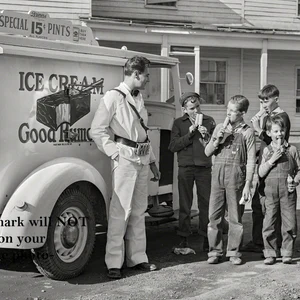
Growing up in the 1950s and 60s, the sound of the ice cream truck was a siren call of joy. It meant summer days filled with laughter, sticky fingers, and the delightful thrill of choosing a treat from the iconic Good Humor truck. For those of us who remember, the sight of the white truck with its bright blue lettering was an integral part of our childhoods, symbolizing carefree days, the simple pleasures of life and the opportunity for the neighborhood to come together.
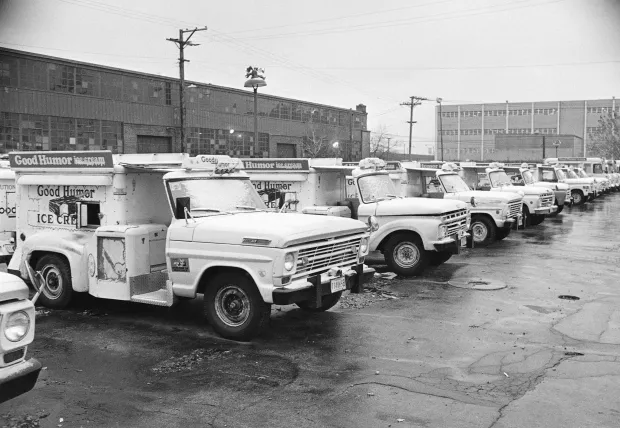
After the end of World War II, Good Humor expanded into the suburbs as the “greatest generation” proceeded to [pro]create what we call baby boomers. By the mid-1950s, sales from Good Humor trucks accounted for 90% of the Good Humor company’s sales, with more than half of their customers 12 years old or younger. The fleet grew to 2,000 trucks. The Good Humor truck became a piece of Americana.
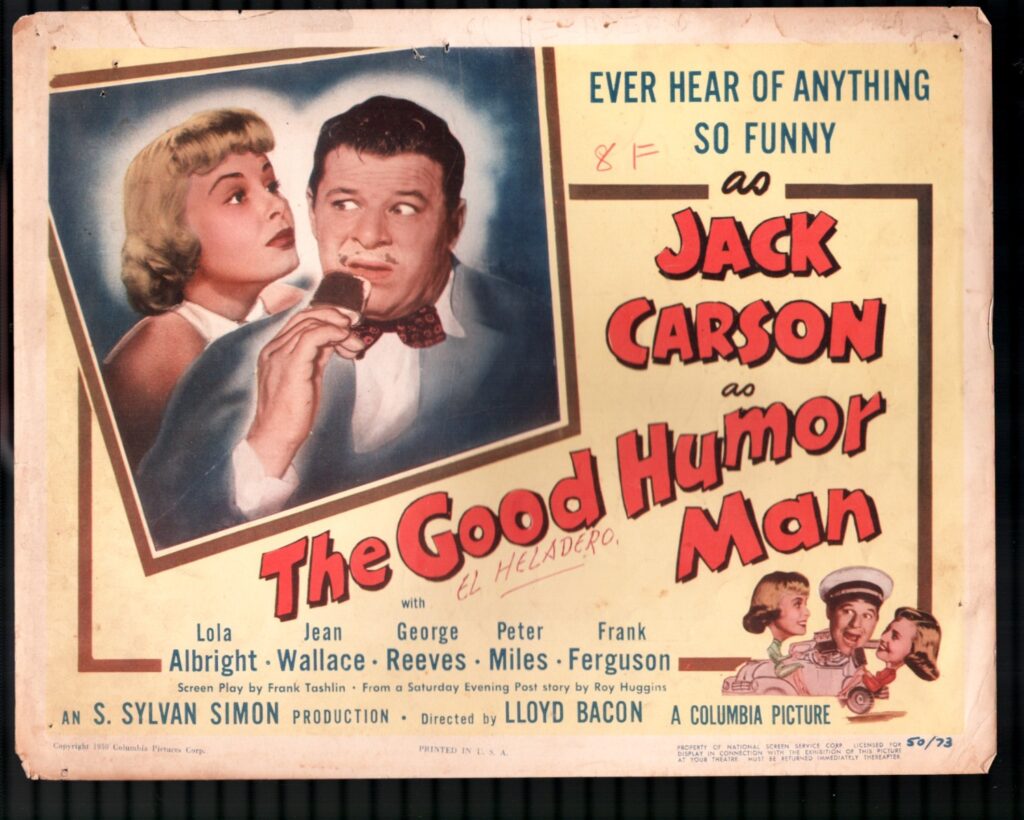
There was even a theatrical 1950 movie titled The Good Humor Man, a comedic murder mystery starring Jack Carson that includes what is probably the only car chase scene in movie history that uses a Good Humor truck.

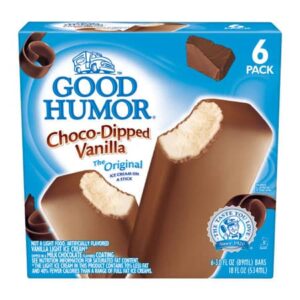
Good Humor is best known for pioneering ice cream bars on a stick, starting with the original Good Humor bar, a chocolate-coated vanilla ice cream treat. This innovation made it convenient to eat ice cream without utensils or cups. While popsicles were also popular at the time, Good Humor focused primarily on ice cream bars. They became iconic for selling these from their classic white trucks.
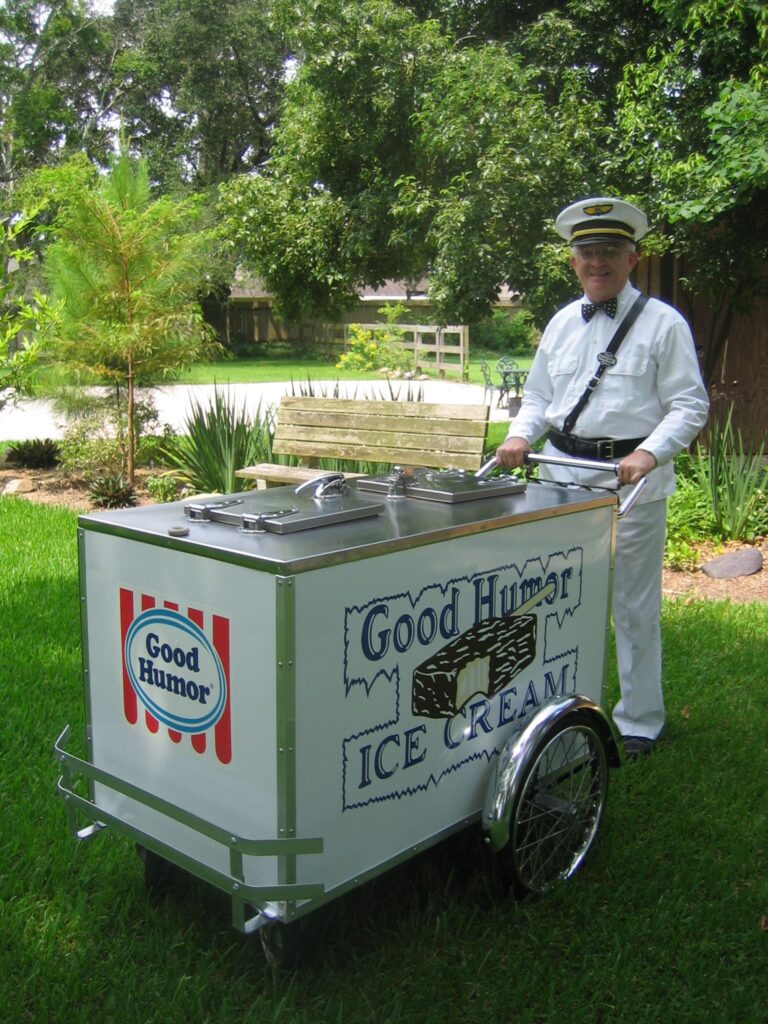
Good Humor was synonymous with summer. The pushcarts and trucks rolled through neighborhoods like a beacon of happiness, offering ice cream on a stick, each bite a moment of bliss. The ice cream man, with his jovial demeanor, was a neighborhood staple. The thrill of hearing the jingling bells and racing outside with a pocketful of change to select a vanilla ice cream bar or chocolate-covered strawberry was a rite of passage for many.

The name “Good Humor” came from the belief that a person’s “humor”, or temperament, was related to the humor of the palate (a.k.a., your “sense of taste”).
The Decline of the Good Humor Truck and Jingle
But as I look at Good Humor today, I can’t help but feel a sense of loss.
As consumer preferences shifted, the presence of the trucks that once brought joy to our streets has faded significantly. The disappearance of this beloved part of childhood can be attributed to several factors:
- Evolving Neighborhood Life: Over the years, communities have become less neighborhood-centric, with fewer people spending time outdoors. Children are more likely to stay inside with screens or organized activities, making it harder for ice cream trucks to maintain the same level of business they once did.
- Competition from Convenience Stores: The convenience of readily available ice cream in supermarkets and corner stores reduced the need for ice cream trucks. Families often stock their own treats at home, making impromptu ice cream truck visits less of a necessity.
- Increased Costs and Regulations: The cost of running a truck, including fuel, insurance, and vehicle maintenance, has gone up, while regulations concerning noise (the jingles) and food vending have become stricter in some areas. Many vendors found it harder to make ends meet.
- Safety Concerns: In some cases, concerns about safety—whether related to food handling, traffic, or even stranger danger—led to a decline in the trust parents had in allowing their kids to run outside for an ice cream.
However, Good Humor as a brand still exists, and while their trucks are rare, you can occasionally find them at special events or see newer ice cream trucks with similar nostalgia-inspired offerings. Some cities also have ice cream trucks with different branding, keeping the tradition alive in a new form. The sound of the jingle and the joy of chasing down the truck may not be as common, but it’s a memory that resonates with many from the past.

Despite this evolution, Good Humor is trying through its “Good Humor Neighborhood Joy Grant” program to encourage local entrepreneurs to bring ice cream trucks back into neighborhoods, aiming to reignite that special connection between the product and the community. It’s a real uphill battle against modern consumer habits, but the effort reflects a yearning to recapture some of the magic that defined our childhood summers.

In addition to the neighborhood truck or pushcart I miss the jingling bells and tune that announced the Good Humor man’s arrival in the neighborhood.
The classic jingle that many associate with Good Humor trucks is often a variation of the song “Turkey in the Straw” or similar tunes that were catchy, repetitive, and designed to grab attention.
If you’re trying to recall the specific jingle from your childhood, it’s likely a version of this tune, played on the chime-like bells that were attached to the truck. here is the link to listen to the Turkey in the Straw jingle for Good Humor as it was years ago. you will need to copy and paste this link on your internet browser. https://www.youtube.com/watch?v=BVAaOluYXpU
The tune “Turkey in the Straw” has a lively, upbeat rhythm that was perfect for catching the attention of kids in the neighborhood. It’s a traditional American folk song with roots in early 19th-century minstrel music.
However, it turns out that this familiar tune has racist roots. “Turkey in the Straw’s” melody originated from British and Irish folk songs, which had no racial connotations. But the song itself was first performed (and gained popularity) in American minstrel shows in the 1800s. Some songs using its same melody contained highly offensive racist lyrics.
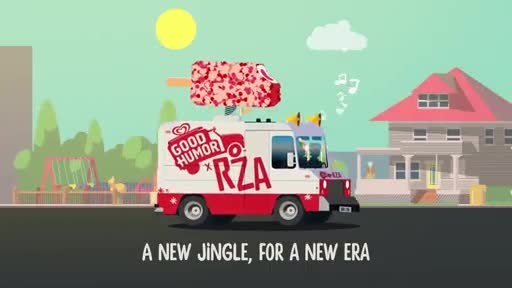
So, four years ago Good Humor teamed up with legendary rapper and founding member of the Wu-Tang Clan, RZA, to reimagine the ice cream truck jingle for a new era.

They are making this song available to ice cream truck drivers nationwide and providing education on how to replace “Turkey in the Straw” in their music boxes. Listen to RZA’s new track here. https://www.youtube.com/watch?v=broo2NZmiDE
I didn’t know I’d have such deep thought-provoking thoughts over an ice cream truck and its jingle, but I guess nostalgia is a powerful emotion.
Lessons
The story of Good Humor serves as a poignant reminder of the importance of community and connection. In a world where convenience often trumps experience, we risk losing those moments of joy that come from local traditions and personal interactions. The nostalgia associated with Good Humor reminds us of the value of simplicity and the joy of small pleasures.

Reviving the ice cream truck could encourage community bonding, foster entrepreneurship, and remind us that joy can still be found in the simple act of sharing a sweet treat with friends and neighbors. As we reminisce about the Good Humor trucks of our youth, let us advocate for their return—not just for the ice cream but for the community spirit they represented.
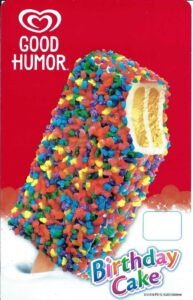
Bottom line, while the Good Humor we cherished may have changed, the essence of what it brought to our lives remains timeless. Perhaps it’s time to embrace the nostalgia and work towards bringing that joy back to our neighborhoods. After all, happiness is best when shared, one ice cream bar or cone at a time.

Spot on Neil.
I drove an ice cream truck in Indianapolis during summer 1969. It was Diamond R Ice Cream instead of Good Humor but very similar to what you recount. Our best sellers were bomb pops and dream cicles. My truck played “And the Band Plays On” constantly. And I mean constantly, I would hear that darned song in my head even while sleeping. The company had drivers keep the trucks at their homes over night, so I often ate up some of my profits late at night. I
was assigned a working class minority neighborhood, which was ideal since the residents didn’t tend to have big freezers. It was a good job and lots of fun.
ben,
thanks for sharing. i am jealous. you have the ability to put on your resume that you once sold ice cream in neighborhoods from an ice cream Good Humor like truck.
neil